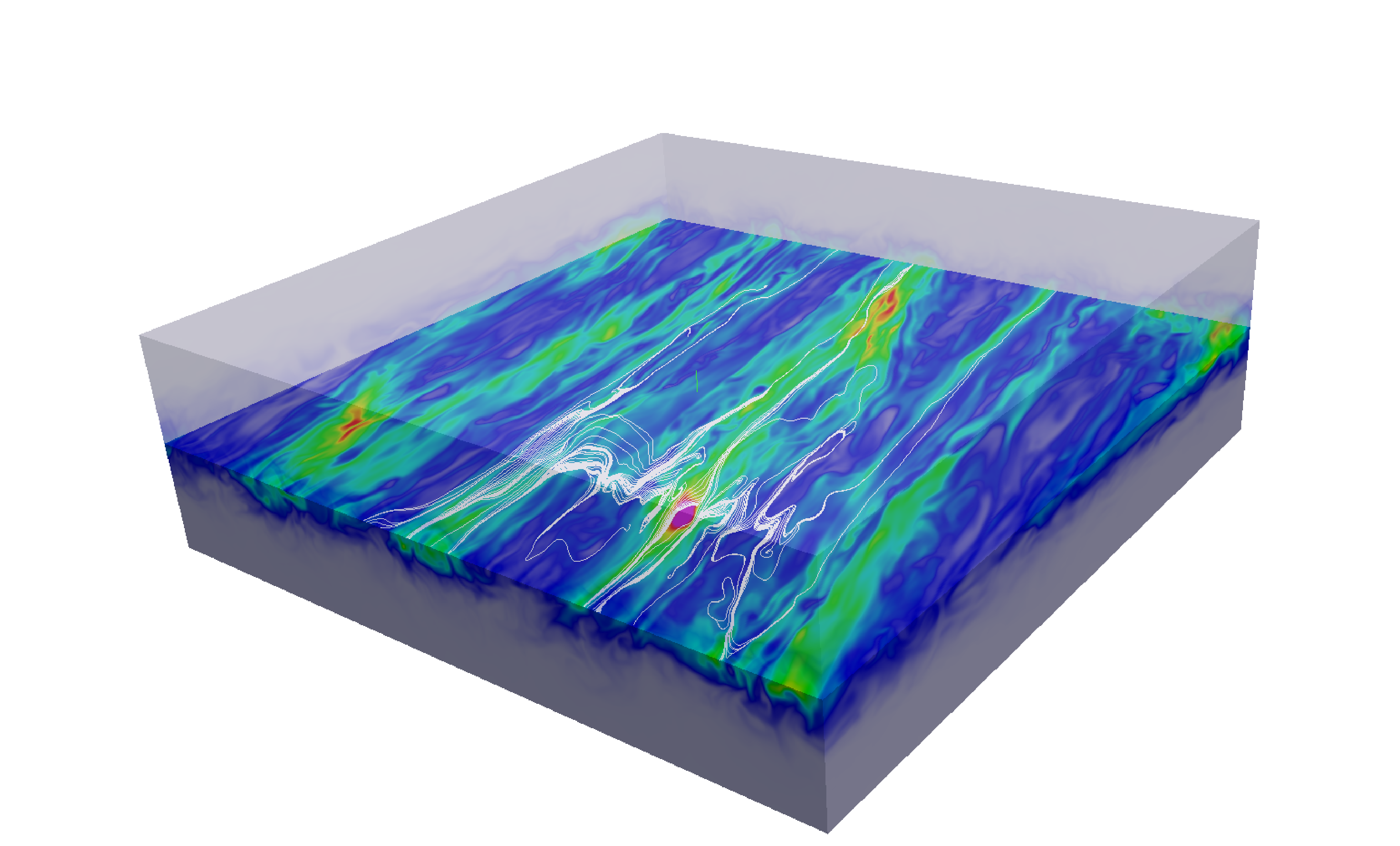I am interested in the turbulence that prevails in
astrophysical disks and the instabilities that sustain it.
Whereas the magnetorotational instability (MRI) is the main cause
of activity in well ionised disks,
in more massive
colder disks, such as young protostellar disks,
gravitational instability (GI) is the leading player.
Other than transporting material onto the central star,
GI can facilitate the fragmentation of the disk into bound objects
which might be the progenitors of the exoplanetary population on very
wide orbits. It can also mix and stir up dust and solid material.
At certain times and
locations the MRI and GI overlap leading to interesting mixed
dynamics, in particular outburst behaviour. The FU Ori and EX Lupi
phenomena could be linked to this. The figure shows a plasmoid of
dense gas encased in a magnetic sheath that has emerged out of
magnetic
gravitoturbulence.
I am interested in exploring aspects of gravitoturbulence numerically.
Topics include fragmentation (of course), the vortical flows and
vertical dust transport associated with GI spiral waves, and the
interaction of GI spiral waves and magnetic fields: can a large-scale
dynamo emerge from gravitoturbulence?
Potential PhD topics include
*Gravitoturbulent dynamos and non-ideal MHD (ambipolar diffusion especially)
*Dust dynamics and spiral waves
*Feathering instability on galactic spiral arms
Recent papers
*Gravitoturbulent dynamos in astrophysical discs
(link)
*Spiral density waves and vertical circulation in protoplanetary discs
(link)
*Magnetorotational instability and dynamo action in gravitoturbulent
astrophysical discs (link)
*Gravito-turbulence and the excitation of small-scale parametric instability in astrophysical discs
(link)
*Gravitoturbulence in magnetised protostellar discs
(link)
